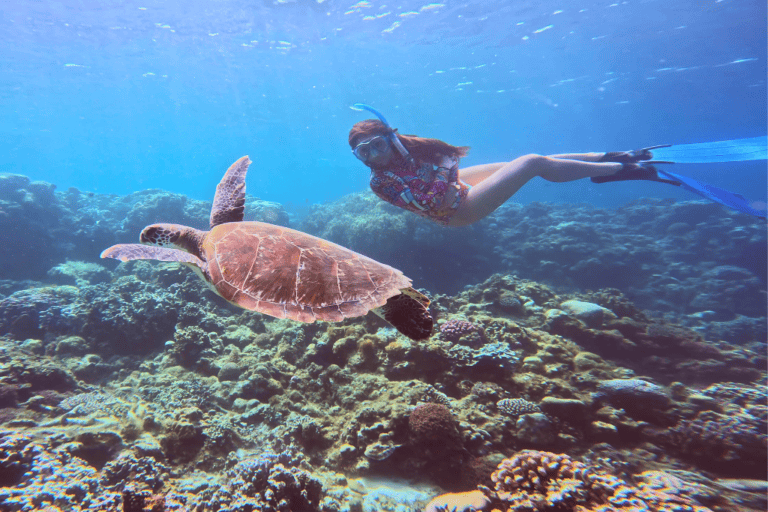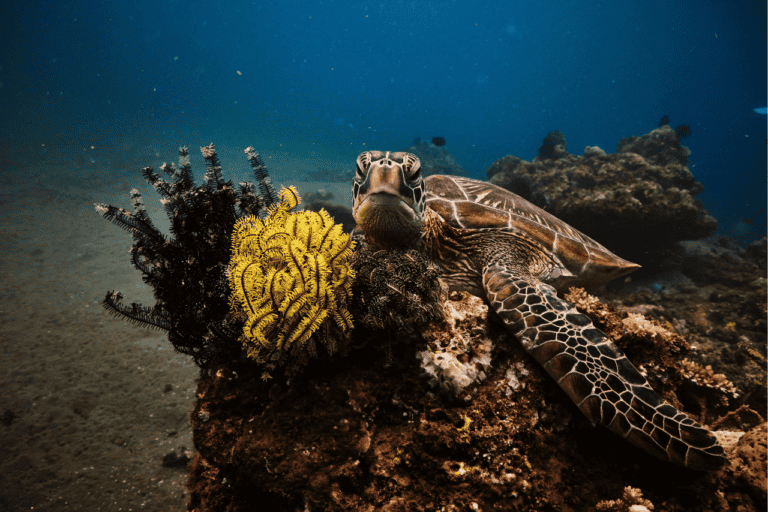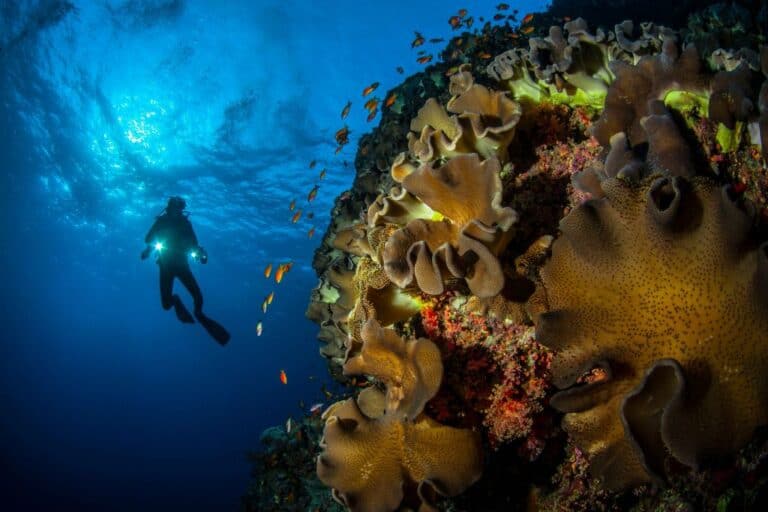Dive2gether: The Koblens Brothers’ Mission to Redefine Diving in Crete
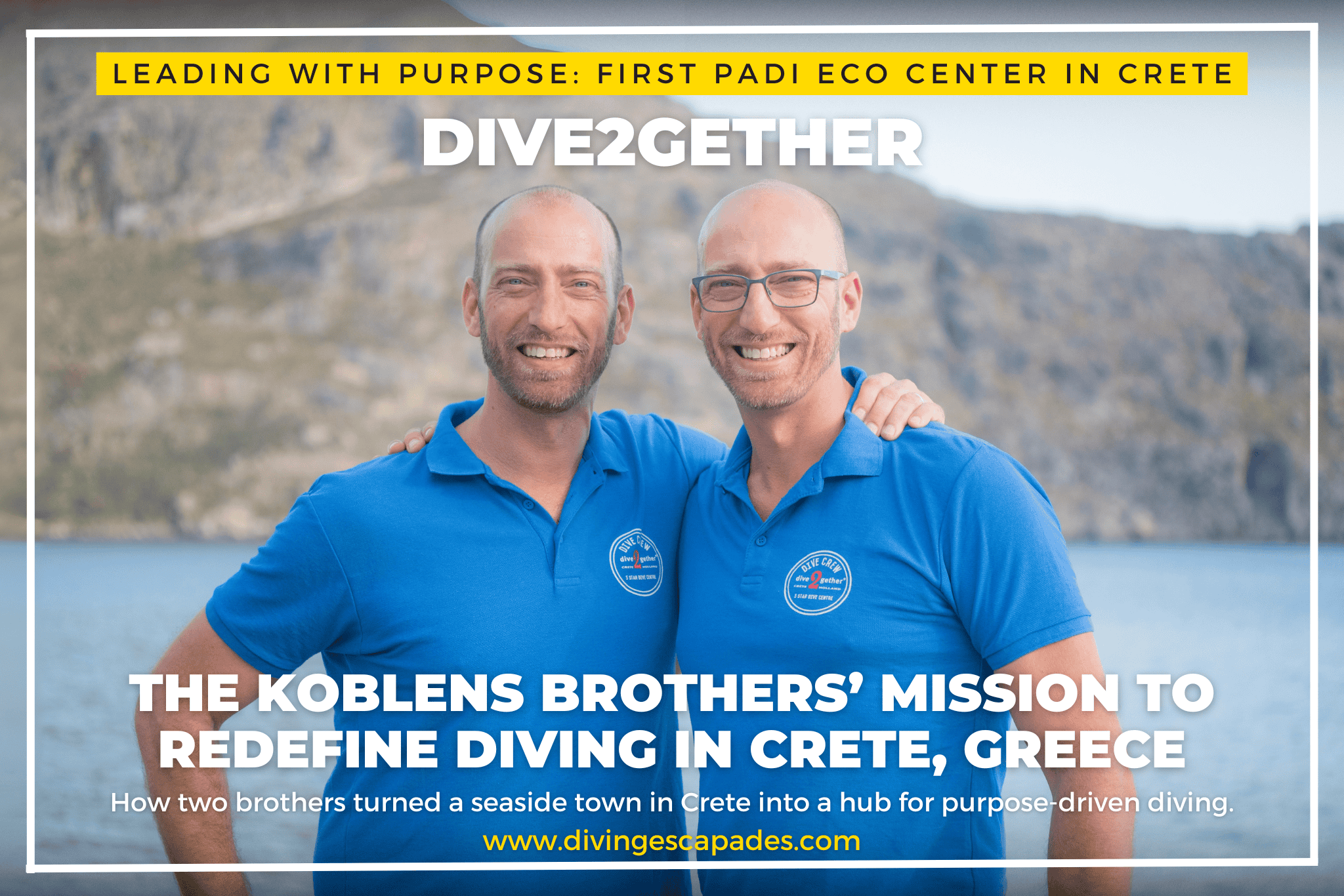

On the sun-washed southern coast of Crete, where the Libyan Sea kisses rugged shorelines, lies a dive center that’s doing more than teaching people how to breathe underwater. Dive2gether, a family-founded operation in Plakias, has built its name not only on skillful instruction and diverse Mediterranean dive sites—but on a foundation of care, education, and sustainable practice.
I sat down with co-founder Paul Koblens and dive instructor Olivier Lamesch via video call to understand what makes Dive2gether stand out in a competitive dive industry.
With a story rooted in family holidays and a long-standing love affair with the sea, Paul’s vision for what a dive school can be feels both refreshingly human and impressively forward-thinking.
From Family Holidays to a Diving Legacy
Paul began diving at the age of 11, captivated by the colorful life below the surface and the camaraderie that blossomed around the dive boat. “What caught me was the international setting,” he said, reflecting on his early days diving alongside his parents and twin brother Erik.
“It was a kind of holiday that offered something for everyone—adventure, education, relaxation.”


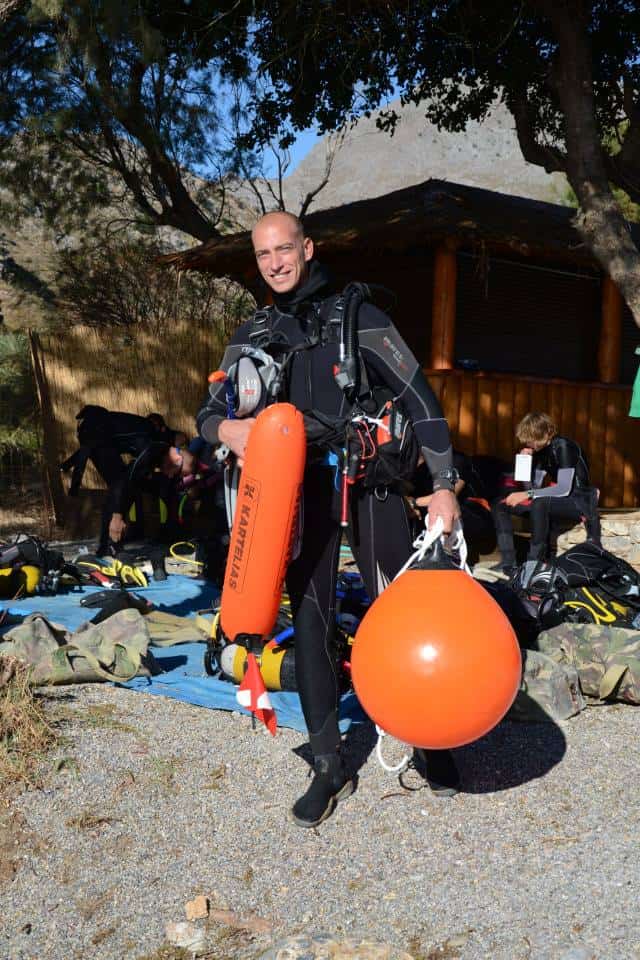
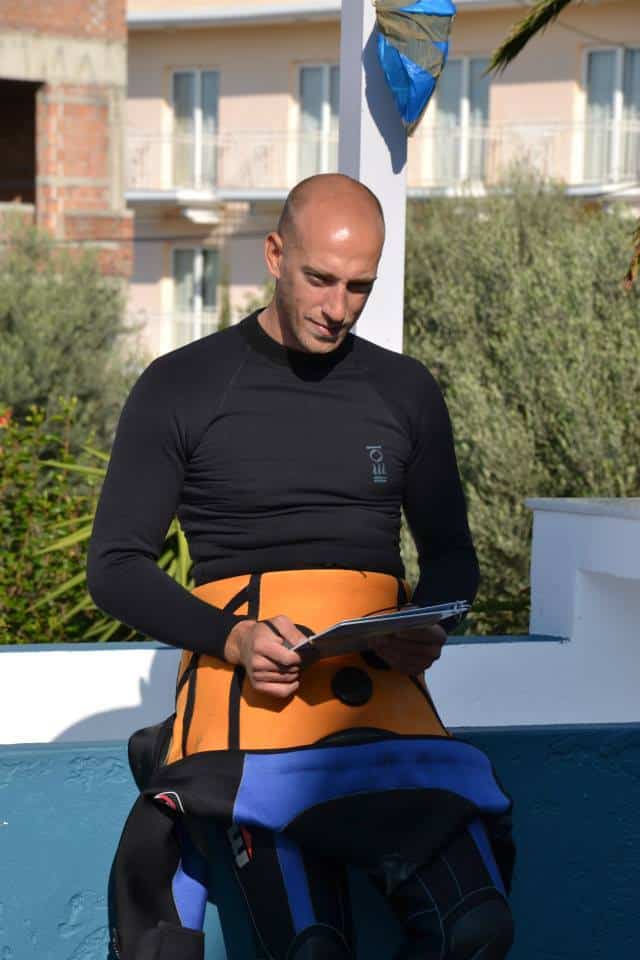
Erik and Paul Koblens during their early days as dive instructors in Crete. Images: John Back
The family kept returning to the same dive spot in southern Crete, not only for the crystal waters, but because of the care and patience extended to every member—even his initially hesitant mother.
“We never expected her to join the diving course,” Paul said, “and it was a surprise for all of us that it actually happened. That was thanks to her own perseverance but also to the instructor, who was patient enough to give her the extra time she needed.”
This emphasis on personal attention and creating space for every kind of learner would later become one of the foundational pillars of Dive2gether.
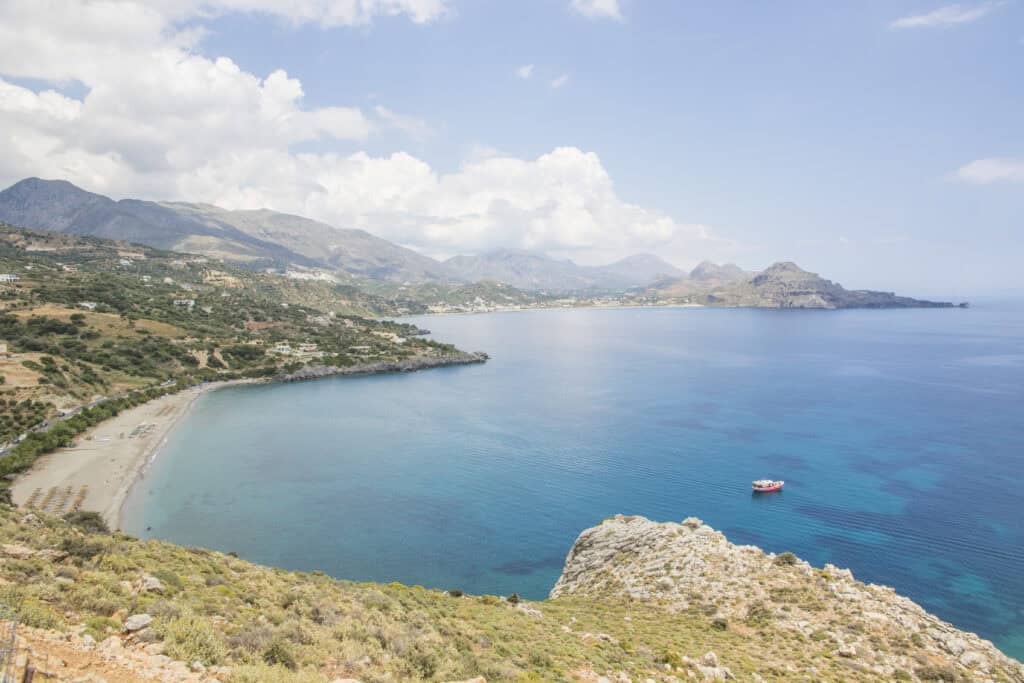
The Birth of Dive2gether in Crete
Fast forward a decade, and after working at several dive schools, Paul and Erik decided to build their own. “We had a long list of what a dive school should be,” Paul explained. “We knew we could do it differently. Better.”
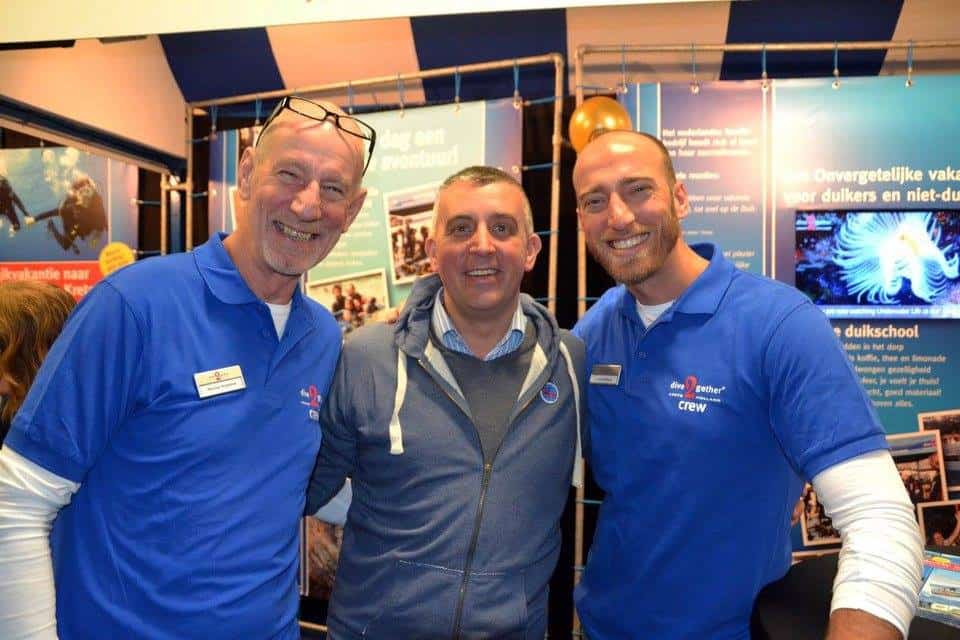
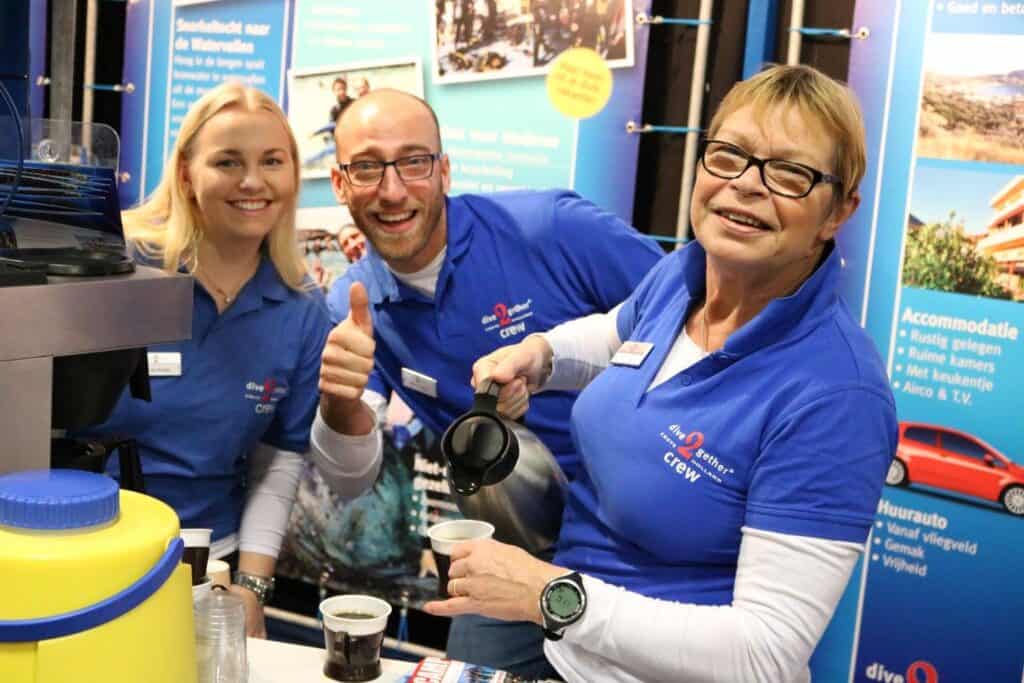
Erik and Paul Koblens with their parents in the early days of Dive2gether—when a shared family passion began to take root in Crete. Images: John Back
Their choice to settle in Plakias, Crete, was rooted in both sentiment and practicality. “We searched for the perfect spot, and it turned out it was right where we had learned to dive,” Paul shared.
Plakias, once a hidden gem, is now celebrated for its unique mix of accessibility, authentic atmosphere, and top-tier dive conditions. “It has grown,” he said, “but it’s still held on to that spontaneous, non-commercial vibe. You don’t find all-inclusive resorts here, and that’s a good thing.”
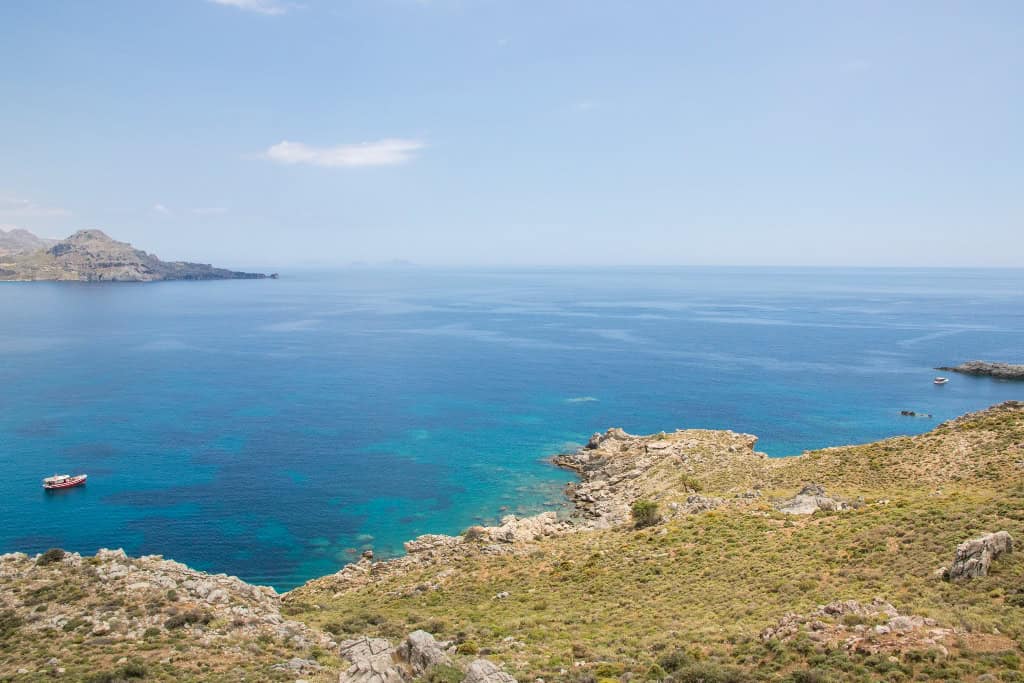
Without the presence of large-scale resorts, Plakias has retained its raw, unpolished beauty—the kind that invites slower travel and genuine connection. Visitors don’t stay cloistered in buffet lines and curated packages.
They walk into town, meet local shopkeepers, eat in family-run tavernas, and get a taste of real Cretan life. “You feel part of the place, not just a guest passing through,” Paul added. “That’s what makes it special.”
What Makes Dive2gether Different
At its core, Dive2gether values safety, social connection, and inclusivity. Rather than expanding through volume, the Koblens brothers focused on training a highly capable, passionate crew.

“Most dive schools struggle because they scale by increasing guest numbers and squeezing staff,” Paul said. “We chose to invest in people instead.”
He and his brother made a key decision early on—not to dominate the front line. “We stepped out of the spotlight to make space for our instructors. That wasn’t always popular with our returning guests,” he admitted, “but we knew it was the right move.”
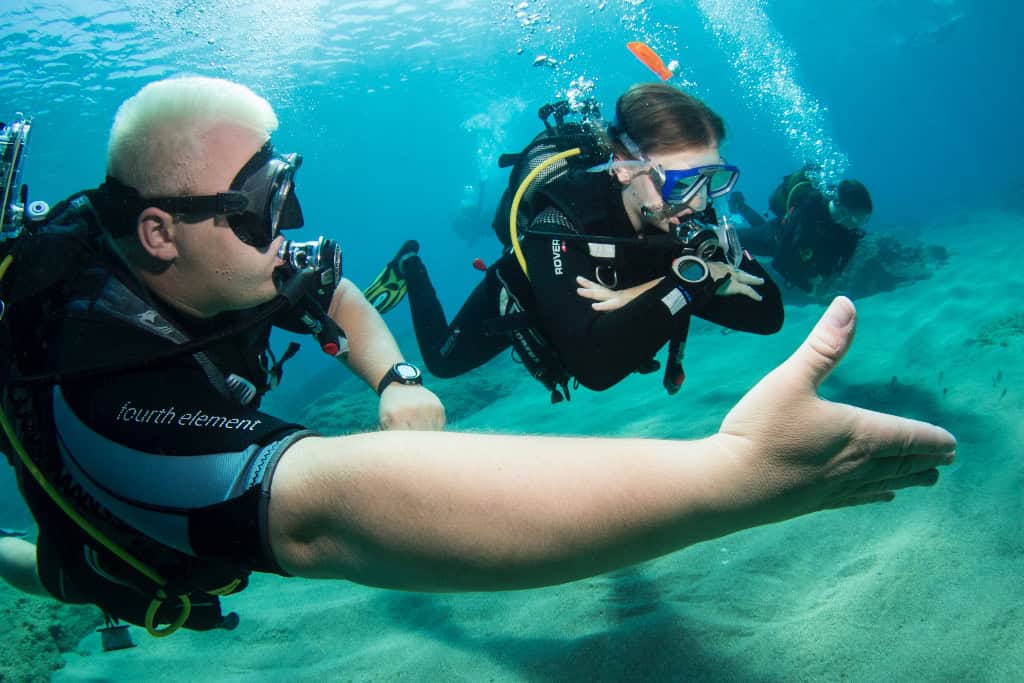
This strategy of stepping aside as younger instructors gained experience helped keep the team fresh and motivated.
“We’re dominant in how we want things to be run, but we step aside when our crew becomes capable,” Paul said. “That allows us to have a large crew, which allows us to keep the ratios very small.”
Olivier Lamesch, who joined as a student and stayed to become an instructor, echoed this sentiment. “It was captured the same way for me. I came here as a diver, became an instructor, and stayed. That says a lot.”
Diving in Plakias: Site Diversity and Daily Tailoring
Crete’s diving opportunities are far more diverse than people often assume. “It’s a very long, thin island,” Paul pointed out. “You could spend months on the island and not see it all.”

He notes that while spots like the Elephant Cave in Chania and the Spitfire wreck near Heraklion often get the spotlight, these are single-dive experiences. Dive2gether offers something more adaptable.
“We went to the South because it gives us better conditions and more varied diving,” Paul explained.
One standout site is Shinaria Beach, which Paul calls “a diving ideal beach.” It was also where he first learned to dive. “It offers shallow depths for introduction dives, deep drops for experienced divers, a nice reef, and even a cavern. It’s versatile, which is exactly what we wanted when we built our program.”
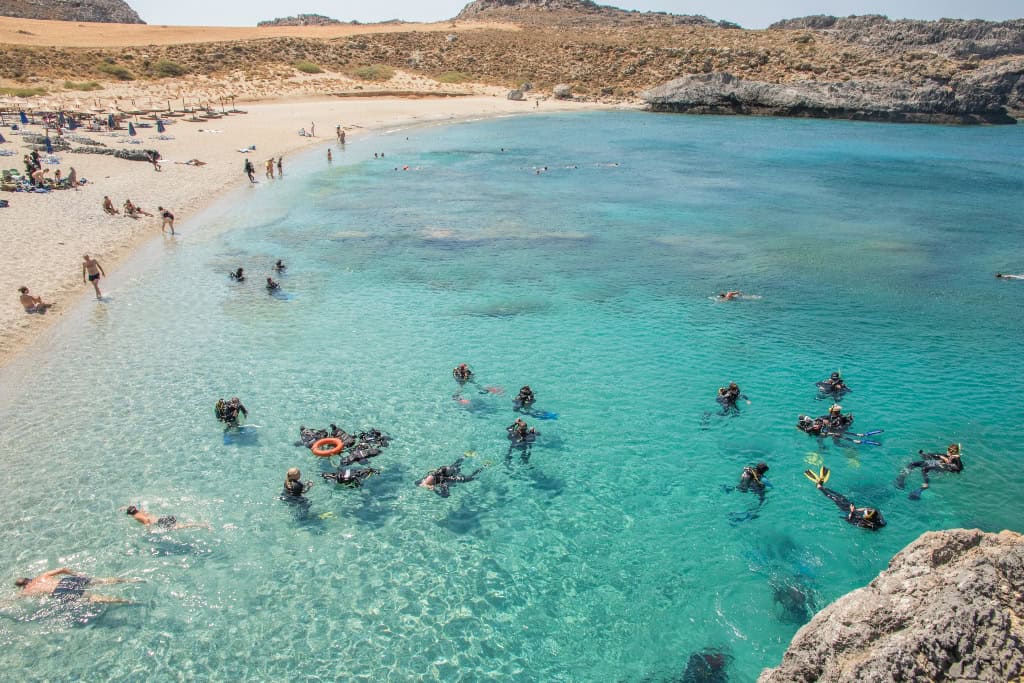
Dive2gether now dives from two shore locations and operates its own boat with access to 14 more sites. “We tailor the daily diving to weather, diver profile, and training level. That’s why we don’t take bookings for specific dive sites. We focus on the quality of the experience, not ticking boxes,” he said.
Want the full scoop on diving Southern Crete? Check out the complete guide—site by site, with insider tips, marine life highlights, and what to expect underwater.

Marine Life in Crete: Finding Beauty in the Details
Crete isn’t known for big marine species—but Dive2gether turns this into a strength. “You don’t come here for whale sharks,” Paul said. “You come here to notice the small wonders.”
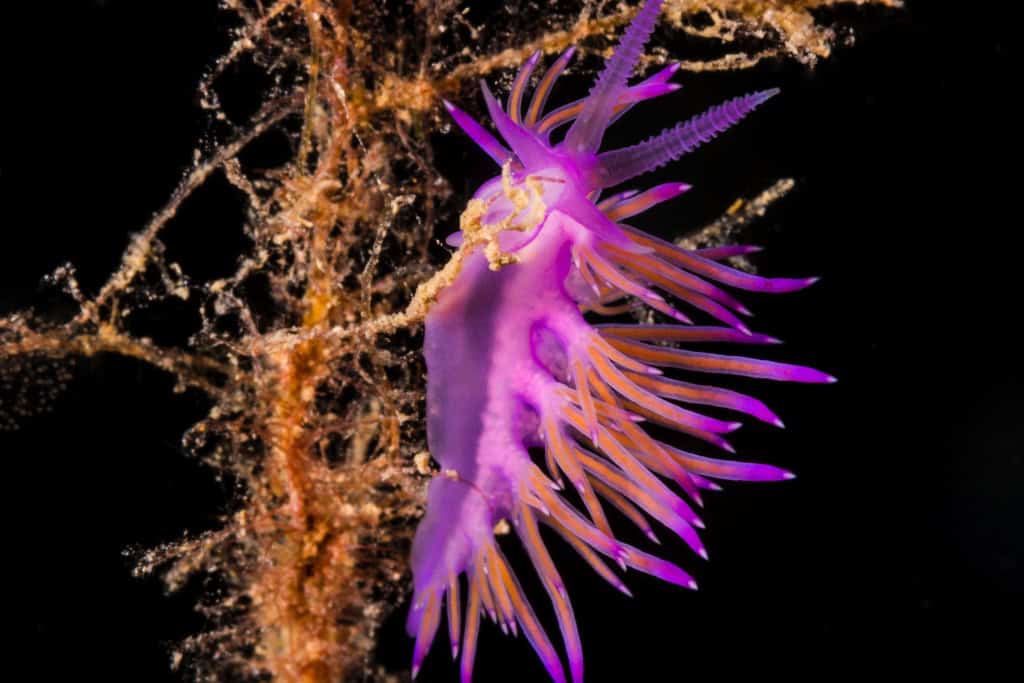
This shift in perspective is what led them to develop one of the region’s most robust marine biology programs.
“You need to be guided by an experienced guide who says, ‘Come with me, come closer to the substrates.’ That’s where you find the octopus, the nudibranchs, the shrimp,” he said. “We used to swim past all this. Now we’re trained to see.”
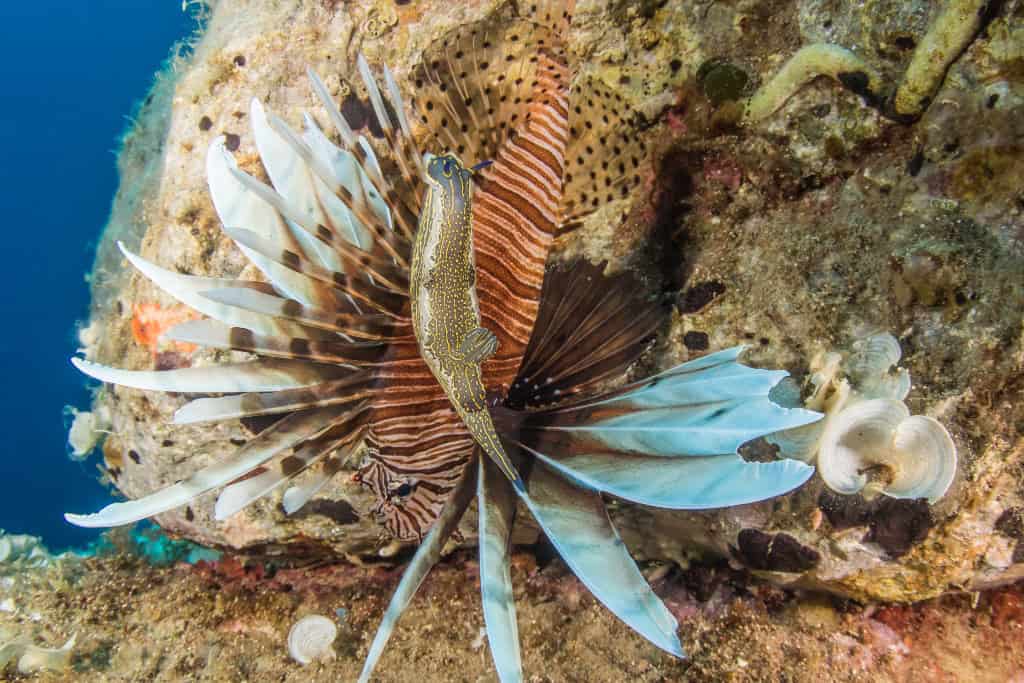
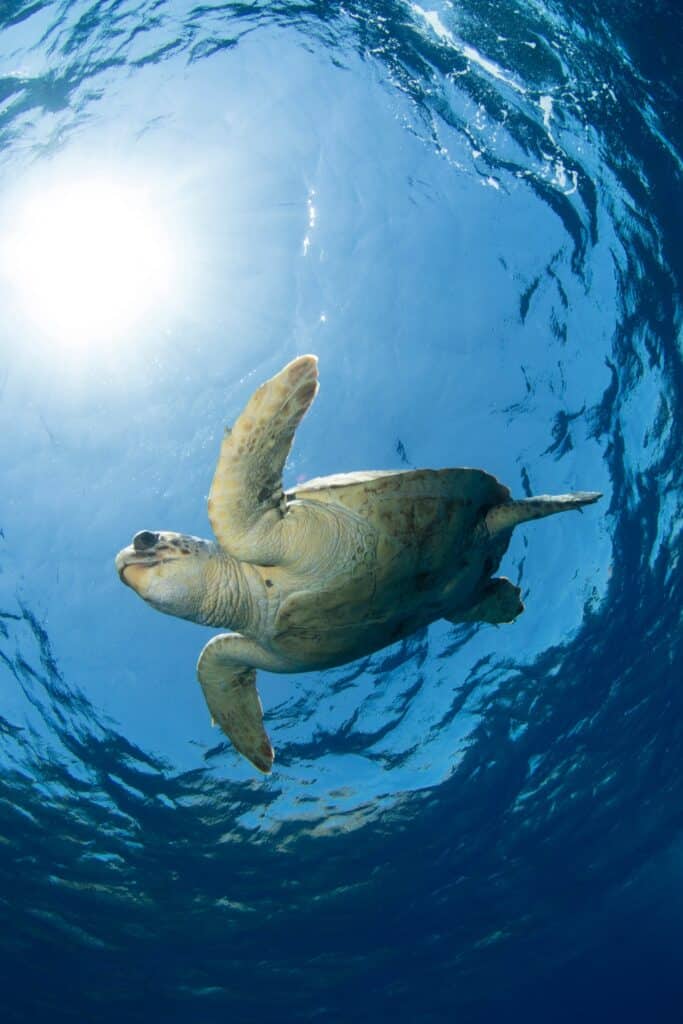
Diving with Purpose: Conservation and Citizen Science
Dive2gether is not just about fun dives. Inspired by PADI’s call for dive centers to embrace citizen science, they brought on their first marine biologist, Martina, in 2016. “She designed our citizen science specialties, and we coached her to build them up into a program,” Paul said.
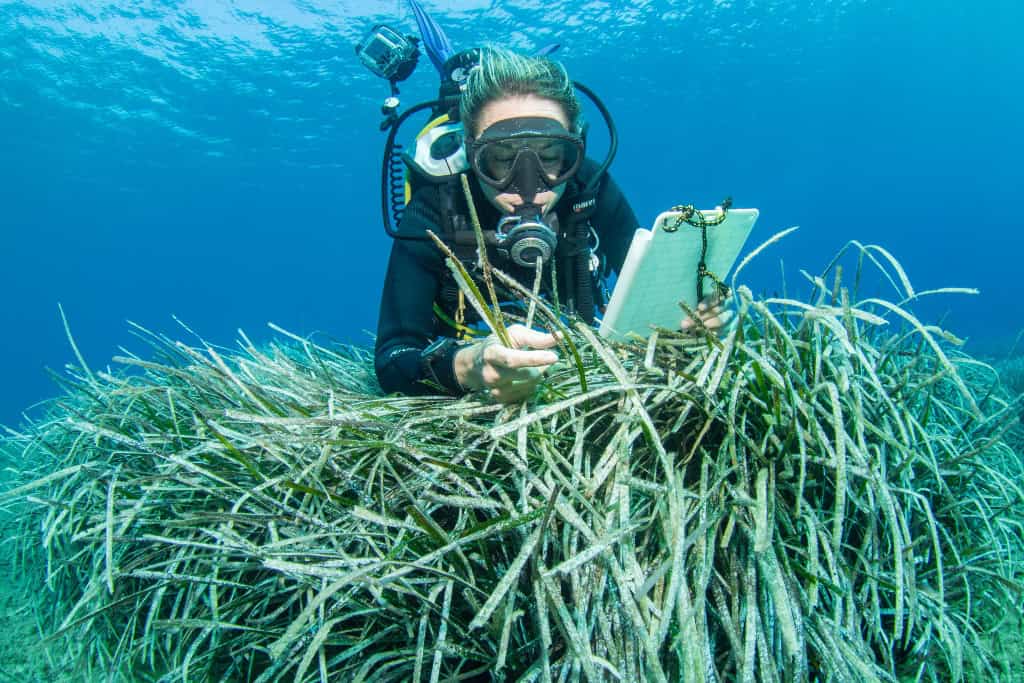
These programs, which include seagrass planting and underwater sampling, culminate in microscope lab sessions back at the dive center. “It’s a one-day experience, but it changes how people see the underwater world,” Paul noted. “They discover themselves as someone who can contribute.”
Olivier added, “People might come for the diving, but they leave with a new level of awareness. It’s really rewarding to be part of that.”
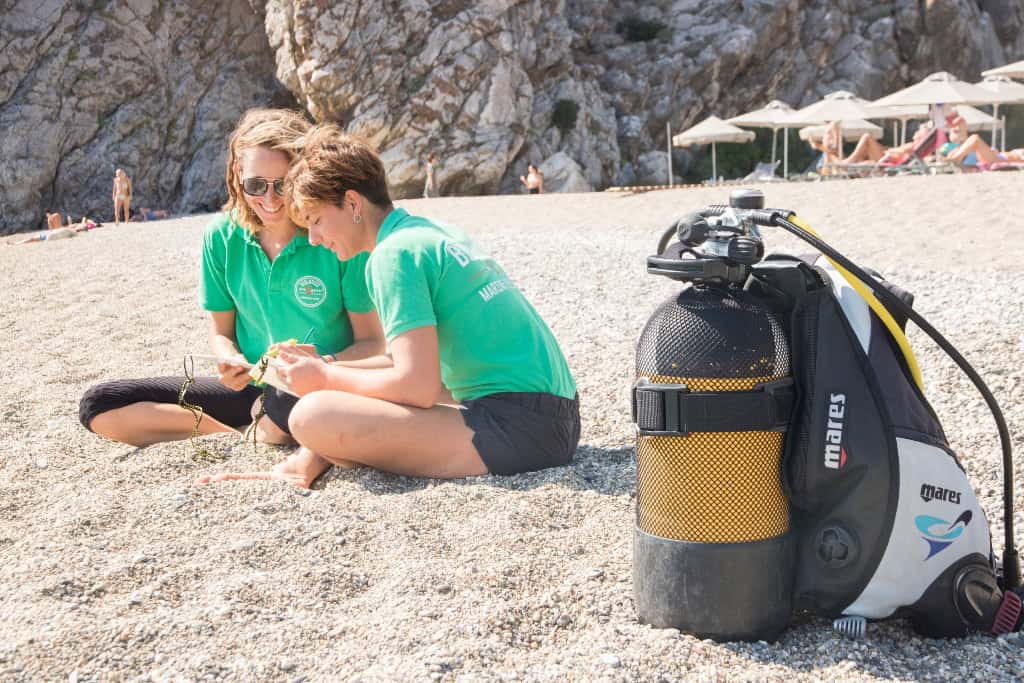
Today, Dive2gether has six to seven marine biologists on staff, all PADI professionals, offering conservation dives and citizen science courses weekly. “In many places, you need to book these specialties far in advance,” Paul said. “We run them almost every week.”
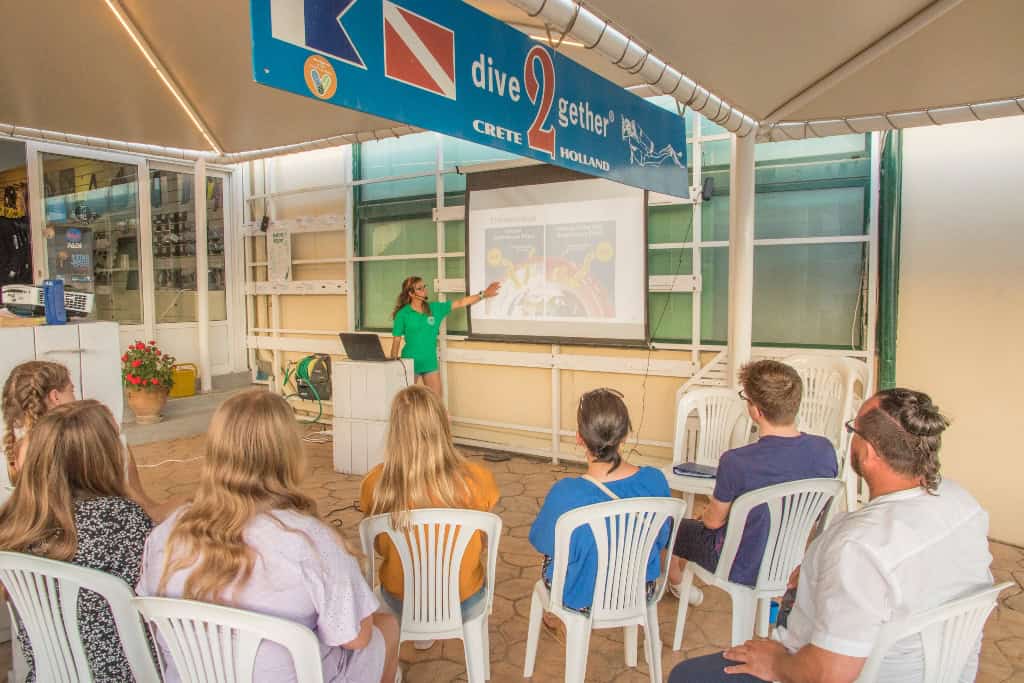
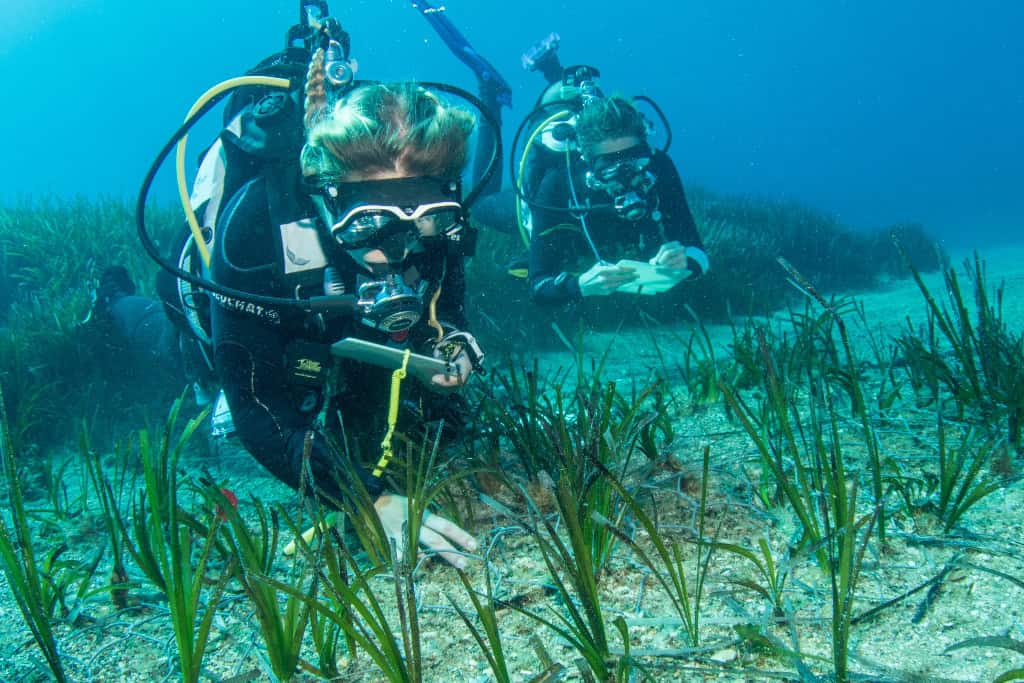
From shoreline lectures and seagrass planting, Dive2gether’s marine biologists lead immersive conservation experiences that turn divers into citizen scientists. Image: John Back
Courses for All Levels and Flexible Experiences
Operating exclusively within the PADI system, Dive2gether offers Open Water, Advanced, Rescue, and Divemaster certifications. But Paul emphasizes the value of specialties.
“We offer a lot of specialty courses that align with the interests people discover along the way,” he said. That includes underwater photography, deep diving, navigation, and more.

They also offer a flexible way to blend conservation into recreational dives. “Because we have several marine biologists on our team, there’s often a chance to join a seagrass planting session—even spontaneously,” Paul said.

“It’s not a full program or something that takes a lot of extra time. We just want to give divers the opportunity to connect with the conservation side of diving, and our team is always excited to make that possible.”
Snorkeling and Options for Non-Divers
Dive2gether also shines in accommodating non-divers and families. “Snorkeling has always been on our program,” Paul said. “It’s the alternative for those who can’t or don’t want to dive.

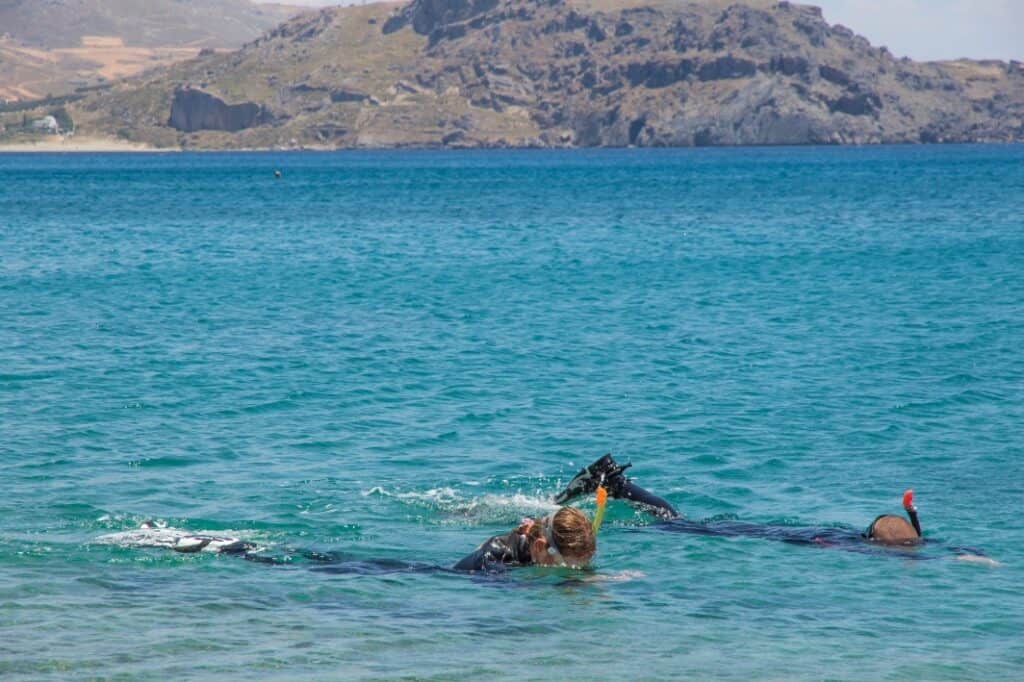
We even had a case where a girl couldn’t dive due to a recent concussion. Her family was really looking forward to diving together, so we arranged a guided snorkel experience for her at the same sites.”
These programs aren’t just for emergencies. Afternoon snorkeling trips are regularly scheduled and open to participants as young as six. “My boys were snorkeling before they learned to swim,” Paul shared. “It’s the best preparation for being in the water.”
A Long-Term Vision for Sustainability
Dive2gether’s long-term view on sustainability is evident in its operational choices. “This isn’t a quick game,” Paul said. “It’s not a quick money-maker. It’s about recurrent guests, quality education, and exceeding expectations.”
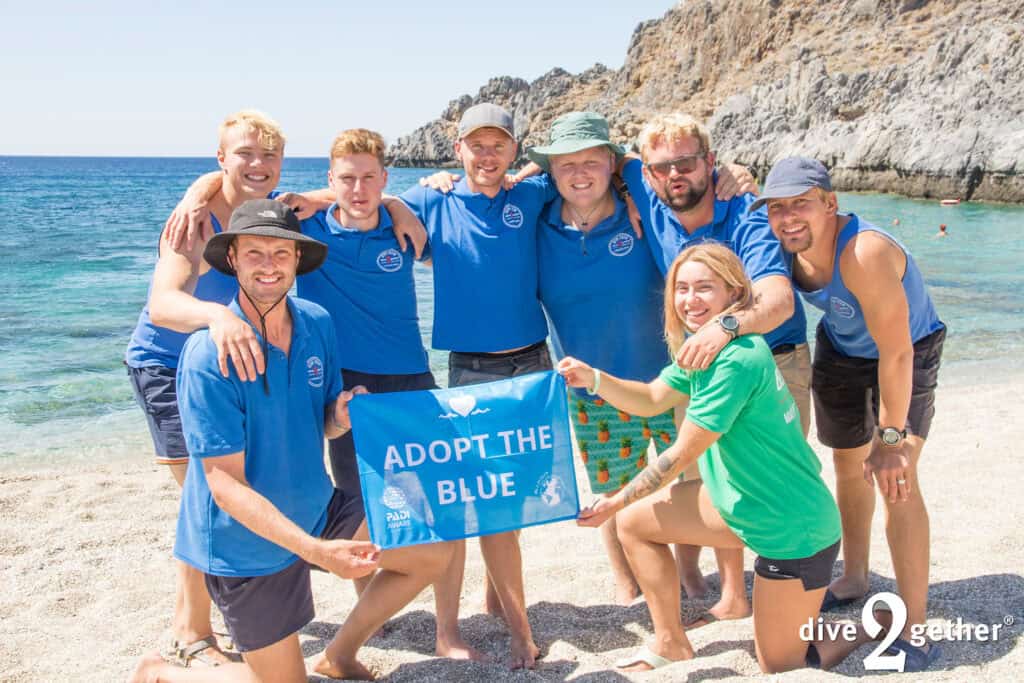
The dive school relies largely on word-of-mouth, which makes consistency and care non-negotiable. “We don’t attract by hotspot,” Paul said. “We attract by reputation. And that forces us to keep up those levels of quality, care, and personal attention.”

Advice for First-Time Divers in Crete
“Go south,” Paul said without hesitation. The north coast may be home to popular towns and resorts, but the south offers better diving conditions.
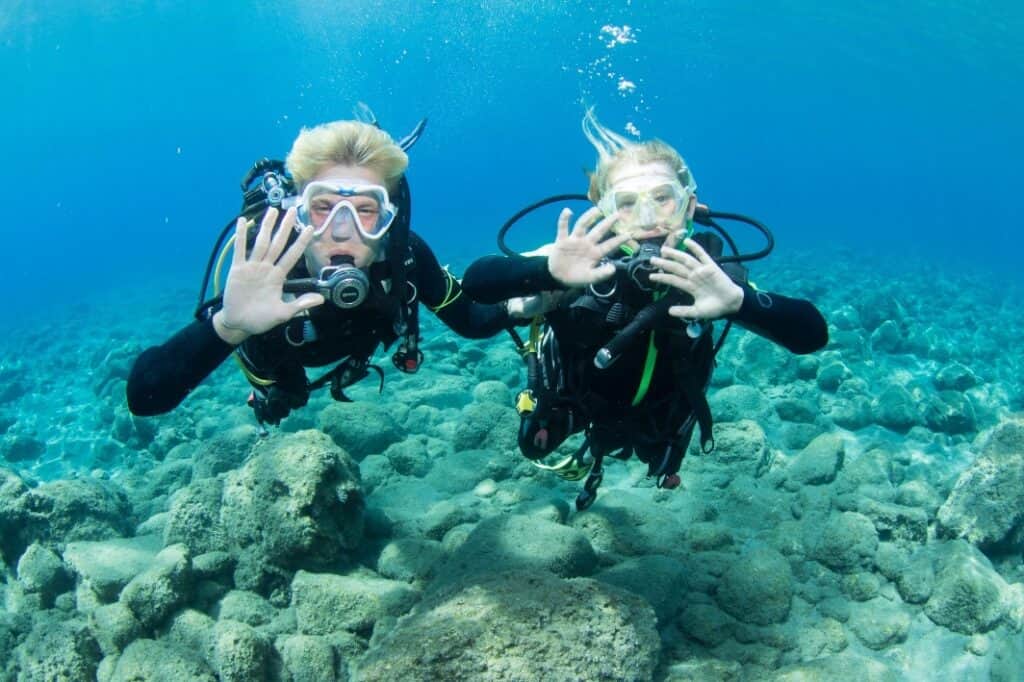
“The northern wind pushes the water against the shore, making it rougher. In the south, especially in Plakias, we have calmer conditions, better visibility, and fewer crowds. It’s ideal for beginners.”
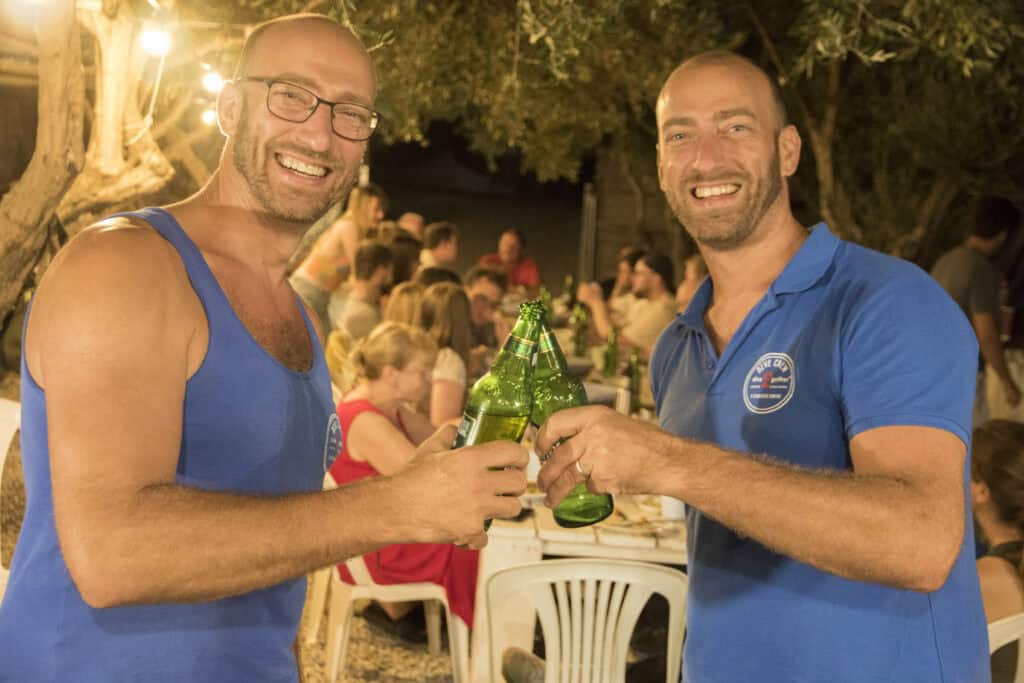
The Wrap Up
Dive2gether isn’t just a place to learn how to dive—it’s a place to feel part of something. From first-timers to seasoned pros, every diver is welcomed with patience, curiosity, and a sense of belonging. Conservation isn’t a side activity here; it’s seamlessly woven into the experience.
While many dive centers offer great training and beautiful sites, Dive2gether adds something more: a thoughtful, human-centered approach that makes each dive feel meaningful.
With a philosophy rooted in care, education, sustainability, and genuine human connection, this family-run center in Crete is quietly redefining what it means to dive with purpose.
CONTACT DIVE2GETHER CRETE:
Website: https://www.dive2gether.com
Instagram: https://www.instagram.com/dive2gether_crete
Facebook: https://www.facebook.com/Dive2gether.Crete
LinkedIn: https://www.linkedin.com/company/dive2gether


